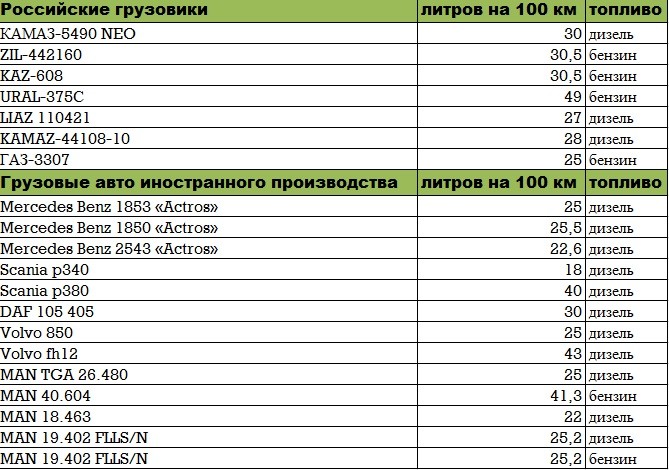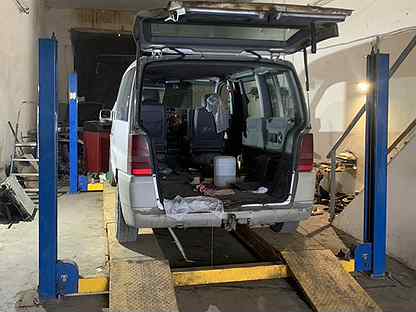
How to increase gas mileage
Content
If you don't drive an electric car, your vehicle will need regular stops to refuel. Sometimes there are situations when the needle of the fuel gauge falls faster than it should. You may not get as far as you expected on one tank of fuel.
There are several factors that can cause low mileage, including:
- Engine tuning problems
- Frequent idling of the engine
- Use of engine oil that does not reduce friction
- Poorly functioning oxygen sensors and air filters
- Permanently on air conditioner
- Faulty or poorly functioning spark plugs
- Bad fuel injectors
- Clogged fuel filter
- Poor fuel quality
- Offset tires
- Stuck brake caliper
- Changing driving habits
- Driving at high speeds
- Operational issues related to emissions
- The time required to warm up the engine in winter.
There are several ways to increase the fuel consumption of your gasoline-powered vehicle.
Part 1 of 5: Choose the right grade of fuel
Your car's gas engine needs to run smoothly to work efficiently. If the fuel used in your engine is not suitable for your vehicle, mileage may be negatively affected.
Step 1: Determine the correct grade of fuel. Check the fuel door for the proper grade of fuel recommended by the vehicle manufacturer.
Be sure to use the correct grade of fuel for your vehicle to get maximum mileage as well as the best performance from your vehicle.
Step 2: Determine if your vehicle is E85 compatible..
E85 is a mixture of ethanol fuel and gasoline and contains up to 85% ethanol. E85 can be useful as a cleaner source of fuel, but only vehicles designed to run on E85 fuel can run it properly.
If your vehicle has a flexible fuel designation or "FFV" in its name, you can use E85 in your fuel tank.
- Attention: E85 fuel is significantly cheaper than conventional gasoline, but fuel consumption, even in a flexible fuel vehicle, is reduced when using E85 fuel. When using conventional fuel, fuel efficiency may decrease by ¼.
Step 3: Use regular fuel in your flex-fuel vehicle.
For best fuel economy, use regular quality fuel in a flex-fuel compatible engine.
You can expect more distance per tank with conventional fuel instead of flex fuel, although fuel costs may be higher.
Part 2 of 5. Driving smart in changing weather conditions
Achieving the best fuel economy in your car can mean you feel a little less comfortable for a few minutes when you start driving.
Step 1: Shorten your warm-up time in freezing weather.
It is often believed that warming up your car in freezing winter conditions is good for your car. However, your car only needs 30-60 seconds for the fluids to properly move through its systems before it's ready to drive.
Most drivers warm up their car to make it comfortable for the passengers inside, but if fuel economy is your main concern, you can do without the 10-15 minute warm-up.
Dress in layers that can be easily removed while driving once the car has warmed up. Use items such as scarves, hats, and mittens to make your first trip more comfortable.
Invest in a car interior heater to warm up your car interior and defrost your windows without having to start the engine.
Step 2: Shorten your cooling time in summer. It can get very hot inside your car in the summer in almost all parts of the United States, especially if the sun is scorching inside.
Whenever you're not driving your car, install a sun visor on your windshield to reflect the sun's rays that heat up your car to unbearable temperatures. You can also try to park your car in the shade where possible.
Run the engine for just a couple of minutes to allow the air conditioner to cool the interior.
Step 3 Try to avoid heavy traffic and bad weather.. In inclement weather conditions such as snow and rain, change your departure time to your destination so that your trip does not coincide with rush hour traffic conditions.
Snow or rain makes drivers more careful and slower, which can result in longer commute or commute times.
Leave before or after rush hour to avoid heavy traffic and avoid unnecessary fuel burn in the parking lot.
Part 3 of 5: Perform Regular Vehicle Maintenance
If your car is not properly maintained, it takes more effort from your engine to power it, which in turn requires more fuel. A properly maintained car will burn less fuel. Check your vehicle's maintenance schedule to find out when and how often it should be serviced.
Step 1: Check and adjust tire pressure.. Your tires are the only part of your car that is in contact with the ground and are your car's biggest source of drag.
Check and adjust tire pressure every time you fill up your car with gasoline. Use the compressor at the gas station to raise the tire pressure if it is low.
- Attention: If tire pressure is only 5 psi lower than recommended, fuel consumption increases by 2%.
Step 2: Changing the Engine Oil. Change engine oil at the recommended interval, usually every 3,000-5,000 miles.
Drain and refill engine oil and change the oil filter every time your vehicle needs an oil change.
If your engine oil is dirty, friction increases in the engine itself, requiring more fuel to be burned to negate the effects of friction.
Step 3: Replace spark plugs. Change your spark plugs at the recommended interval, usually every 60,000 miles or so.
If your spark plugs don't work well or misfire, the fuel in your engine's cylinders doesn't burn completely and efficiently.
Inspect the spark plugs and replace them with the correct spark plugs for your engine. If you are not comfortable changing spark plugs yourself, ask a mechanic from AvtoTachki to do it for you.
Step 4: Replace Engine Air Filter When It's Dirty. You can lose 5% or more in fuel efficiency if your air filter is dirty.
When the air filter is clogged or heavily soiled, your engine is not getting enough air to burn cleanly. The engine burns more fuel to try and compensate and tries to run smoothly.
Part 4 of 5: Troubleshooting Emissions and Fuel System Problems
If your exhaust system or fuel system shows signs of problems, such as the check engine light coming on, rough running, black exhaust, or rotten egg smell, repair them immediately to prevent excessive fuel from burning.
Step 1: Fix any problems with the Check Engine light.. If it is on, diagnose and repair the Check Engine light as soon as possible.
- Functions: The Check Engine light primarily indicates engine problems, but is also related to the fuel system or emissions related problems.
Step 2: Check for problems with the catalytic converter.. A rotten egg smell indicates a problem with the catalytic converter, which suggests either an internal catalytic converter failure or a problem with the fuel system, which may be using much more fuel than normal. Replace catalytic converter if necessary.
Step 3: Check the engine for fuel problems.. If your engine is misfiring, it is either not burning fuel properly, not getting enough fuel into the cylinders, or too much fuel being delivered.
Step 4: Check the exhaust. If the exhaust is black, this indicates that your engine cannot burn fuel efficiently in its cylinders.
This can be caused by too much fuel being injected into the cylinders or if the engine is not running properly.
Many engine emissions and fuel system problems are complex and difficult to diagnose. If you are not comfortable doing diagnostics and repairs yourself, contact a trained mechanic from AvtoTachki who will do it for you.
Part 5 of 5: Change your driving habits
The fuel consumption of your car is highly dependent on how you drive it.
The following tips will help you save fuel while driving:
Step 1. If possible, accelerate slightly.. The harder you press the accelerator pedal, the more fuel is delivered to your engine, allowing your car to accelerate faster.
Faster acceleration will drastically increase fuel consumption, while moderate acceleration will save fuel in the long run.
Step 2: Install Highway Cruise Control. If you are driving on a highway with free traffic, set the cruise control to moderate fuel consumption.
Cruise control is better than you at maintaining a constant speed, eliminating power surges and slowdowns that burn unnecessary fuel.
Step 3: Slow down early by coasting. If you use the accelerator until the last second before braking, you use more fuel than if you let off the accelerator and coast slightly before decelerating to a complete stop.
If you follow these simple methods, you can help your car run more efficiently, increase its power and reduce fuel consumption.
If you cannot find the cause of low gas mileage, contact a certified mechanic, such as AvtoTachki, to inspect your vehicle. Whether you need to replace spark plugs, change oil and filter, or repair and diagnose the Check Engine indicator, AvtoTachki specialists can do it for you.

